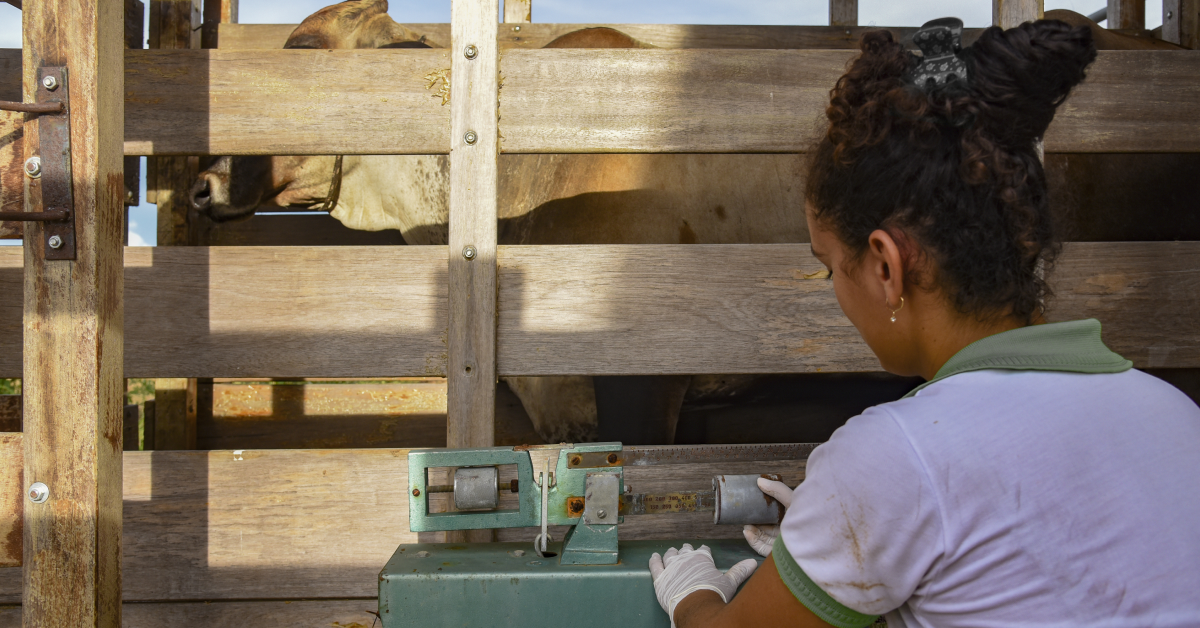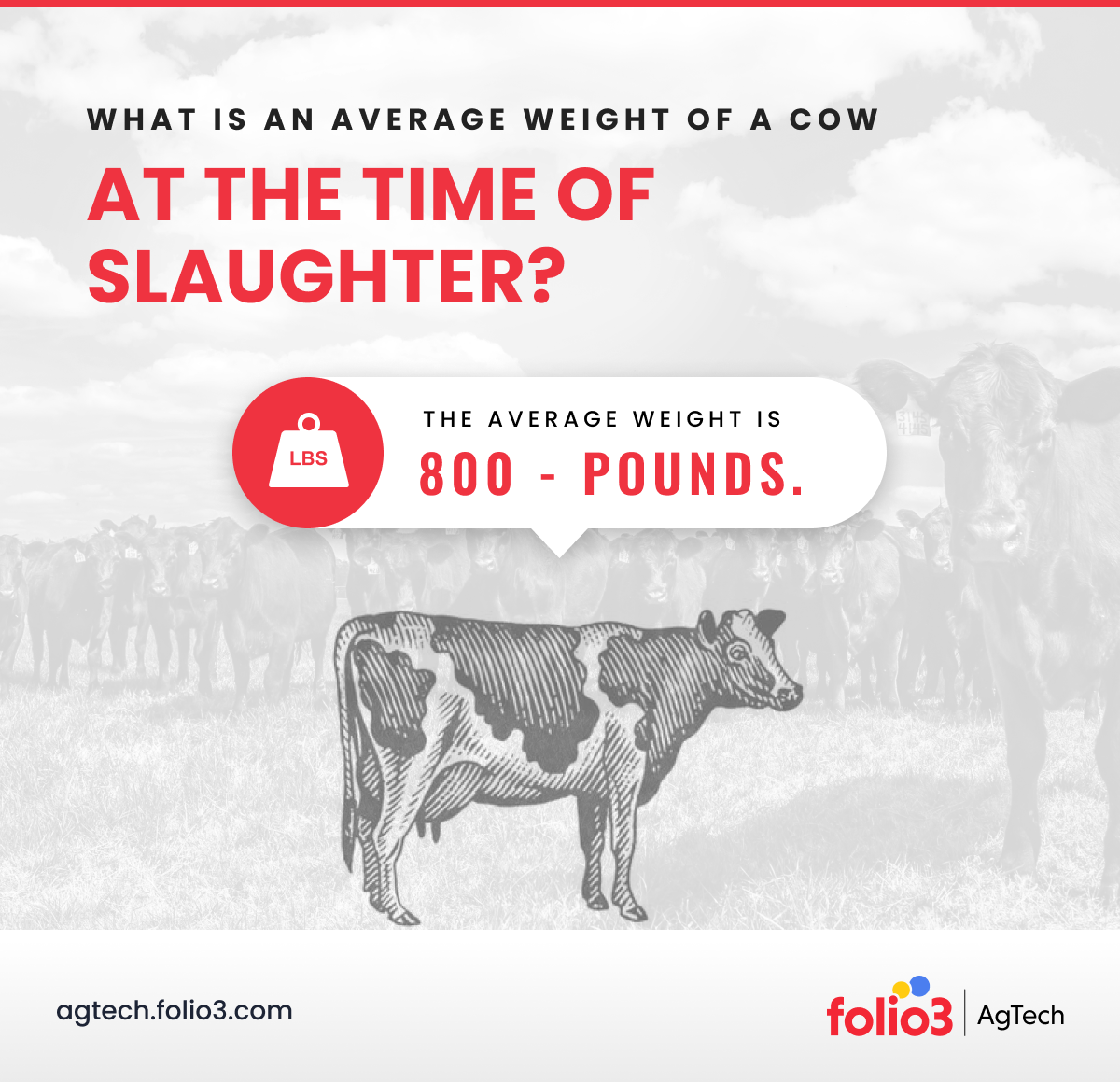How Much Does a Cow Weigh in Pounds?
For seven most popular breeds, the average mature cow weight is around 1,400 pounds. Hereford is the heaviest at 1,419 lbs. after which comes Angus and Red Angus at 1,410 lbs. and 1,409 lbs respectively.
According to Ken Olson, a range beef calf/cow specialist at the South Dakota State University, the size of cow matters. The present age’s fed cattle (heifers and steers) are, as compared to 1990, larger at slaughter. On the feed, they spend eight more days. They gain weight 16% faster and they are more efficient. Though the weight gaining process is faster in livestock than it was twenty years back, the fat marbling and other characteristics are still the same.
Olson, while addressing a Range Beef Cow Symposium happened in Mitchell, NE, said:
“There is a steady trend upward over the 20 years for both steers and heifers, and we’re putting on an additional 150-170 lbs. at finishing today. That equates to about 14% larger weights. They do spend about eight more days to get there, but their average daily gains are about 60% faster, and they’re more efficient,”
Ken cited the work of Justin Waggoner of Kansas State University. Justin had been involved in a feedlot project which is called ‘Focus on Feedlots’. The project has been a success and was able to collect data of 20 years from feed yards of Kansas all of the different sizes, from capacities of 10,000 – head to 75,000 – head.
The gathered data deeply demonstrates how the beef production industry has maintained stable production with less number of cattle as compared to 1974.
“When you put all that information together and divide the weight of beef slaughtered by the number of cows, we have a very steady trend line over time of increasing the amount of beef produced per cow. There’s about an 18% improvement over that same 20-year period.”
To make it easier for people to understand how much the size of a cow has increased, Ken used EPD number as one of the indicators. Since the early 1970s, the yearling weight of Angus breed that is considered as a reliable mature weight indicator has been increased 96 lbs. And at the same time, Angus heifers and steer weights, on average, have increased up to 239 lbs. and 300 lbs. respectively.
“Another source of information on mature cow size weights comes from actual research data from USDA’s Germplasm Evaluation Program. They conducted a direct, head-to-head comparison of nine sire breeds, all representing the character of those sire breeds when bred to common genetic resource cows and allowed to grow to full genetic maturity, and weighed at five years old as a measure of mature weight,” Olson explains.
The average size of a cow (in all breeds) was around 1,390 lbs. And if we further separate heaviest and lightest breeds then Herefords take the first place as it is the heaviest i.e. 1,419 lbs., Angus comes at second at 1,410 lbs. After these two comes Red Angus which weighed around 1,409 lbs. In between, were the three lightest breeds that are Limousin (1,391 lbs.), Gelbvieh (1,323 lbs.), Charolais (1,371 lbs.), and Simmental cows (1,404 lb)
Olson Commented on these findings by saying that it appears upside down pattern when you put the breeds with numbers. The British breeds enjoy increased growth and added the potential of growth and size in their breed. Whereas, the continental breeds are more focused on other kinds of traits.
The More It Eats, the More It Weighs
Olson, talking about the management, said that we have observed the increase in the size of cows and we prefer to stay in the range of 1,200 to 1,400 lbs. This is where management plays an essential role. A producer decides where his animals will stand within this range.
In managing the weight of a cow, knowing its actual size is a big deal, according to Olson. Most ranchers do not have access to a sale, but getting a mature cow weight should be a rancher’s primary goal. Another way to measure the size is by noting cull-cow weights and making adjustments to that weight based on how those cows compared to an average of the herd.
According to Olson, the bigger the cow, the more nutrients it needs. The requirement of nutrients does not increase in direct proportion to the cow’s size, and this is a good thing. These requirements go up at ¾ powers ratio, or 75 percent and not one to one. So a 1,400 lb cow requires more than 11 percent maintenance energy as compared to a 1,200 lb cow, regardless of the fact that it is about 16 percent heavier.
How to Find Additional Feed Resources?
For 1,200 lb and 1,400 lb cows, the annual intake of dry matter will be around 9,353 lbs. and 10,406 lbs respectively. Here, that 11 percent difference for large-sized cow is apparent. You will need more feed resources to fulfill the requirements. The bigger cow is also responsible for that bigger bill of feed that you will have to pay. In order to produce, how much more does she require?
To find out the answer, Ken divided that 9,350 lbs of feed that are consumed by a cow that weighs 1,200 lb, by a 500 lb weaning weight. And according to the results, 18.7 lbs of feed is being used by the cow to produce 1lb of a weaned calf. A 550 lb calf will be produced by a 1,400 lb cow.
Olson drew this conclusion that as we add 200 lbs to a cow, we need to add more weaning weight of 50 lbs to the calf.
He suggested that cattle producers in the present age must consider the environment of their ranches and the impacts on stocking rates that are created by larger cows.
“The bottom line is that production systems need to be considered using an integrated approach. As we make adjustments to genetics, we need to consider the ramifications on all other aspects of the operation, including range management, and feed/nutrient supplies, if we want the system to be productive and profitable,” Olson says.
FAQs About How Much Does a Cow Weigh
What is the average weight of a cow at slaughter?
According to Ken Olson, the cattle today at slaughter (heifers and steers) are about 14 percent larger than the cattle in 1990. As they gain weight faster, spend more days on feed, and are more efficient.
What is the average hanging weight of a cow?
An average cow weights around/about 1,200 lbs and it has a hanging hot carcass weight of about 750 pounds.
What is the average weight of a beef cow?
A steer weighing around 1,000 lbs i.e. 450 kg provides a carcass that weighs around 615 lbs i.e. 280 kg after the head, blood, feet, guts, skin, and offal are removed from it. It is then hanged in a cold room for one – four weeks and during this time it loses some more weight as the waster dries out from the meat. After this whole process, the carcass will weigh around 430 lb i.e. 200 kg.
What is the average hanging weight of a cow?
An average cow weighs around 1,200 lbs. It has an (HCW) hanging hot carcass weight of around 750 pounds.









